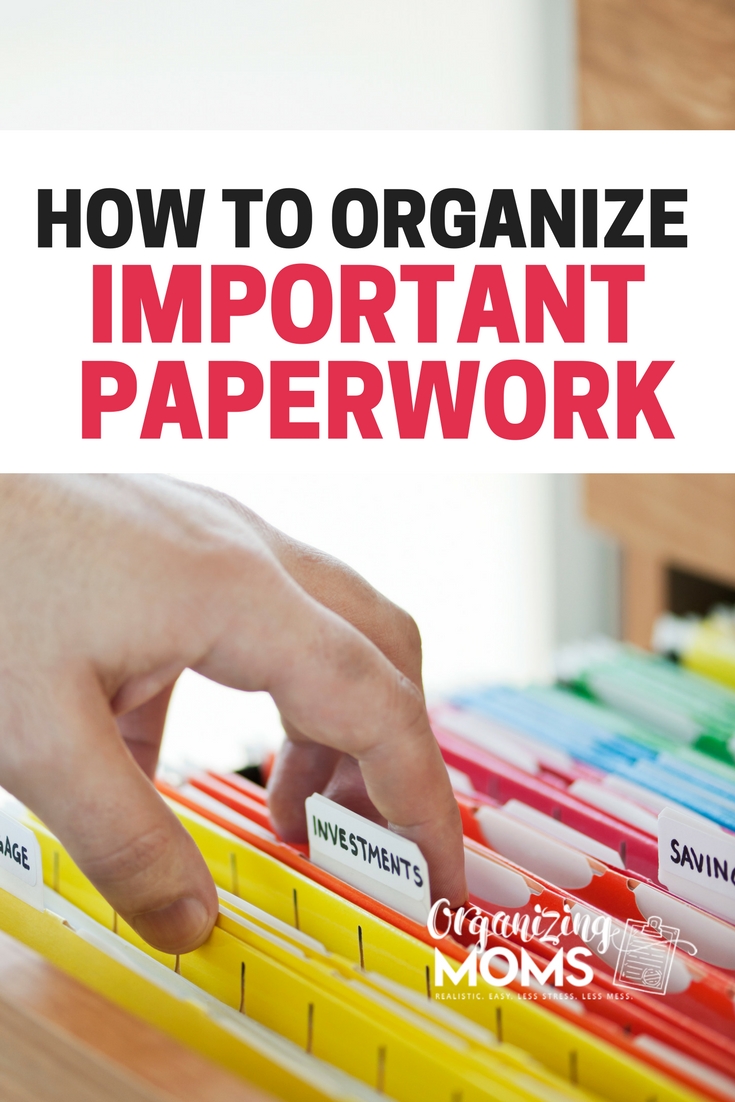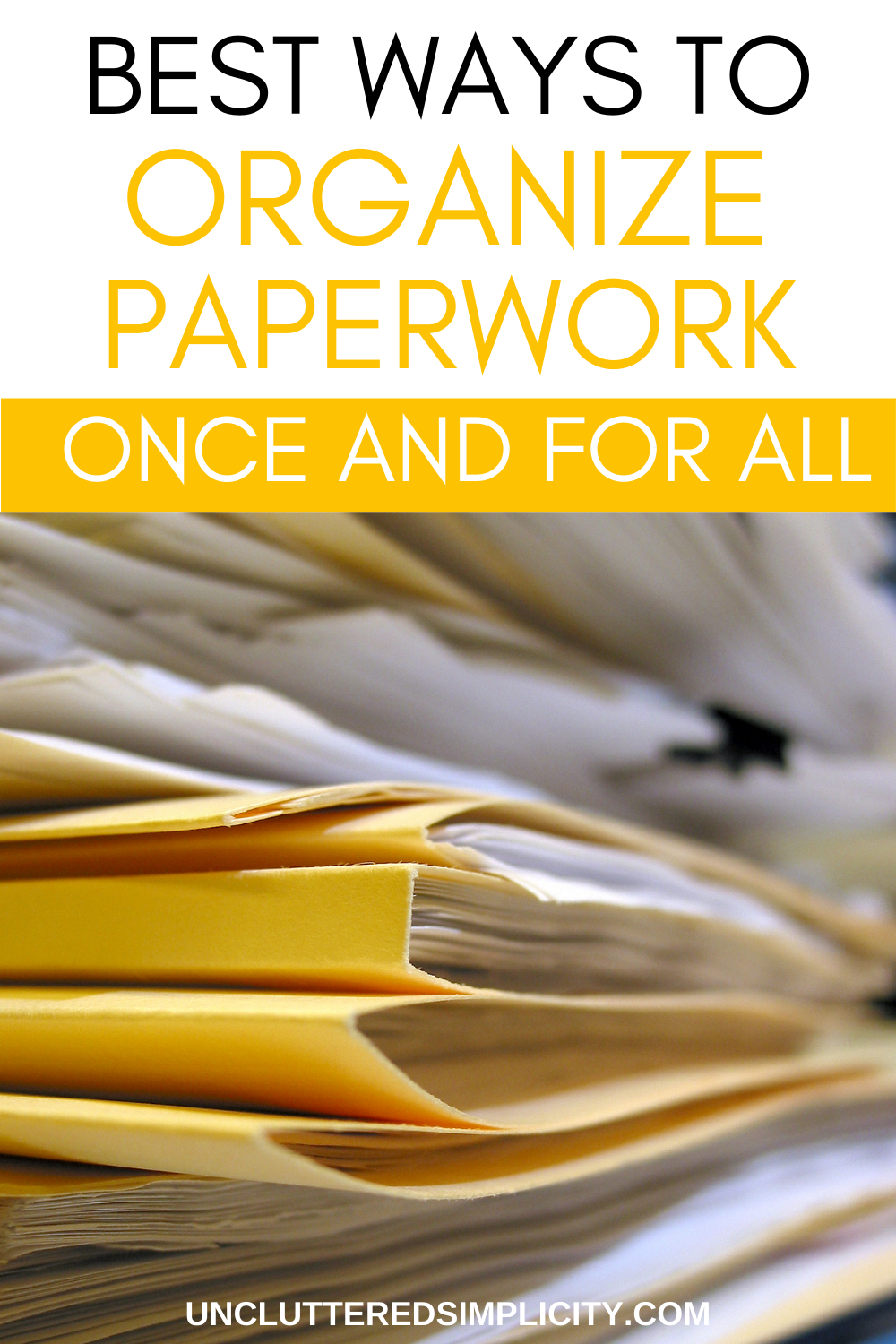5 Ways to Organize Your Home Paperwork Efficiently

Managing paperwork in a home can quickly become overwhelming, especially if you're the type who loves to keep every bit of paper "just in case." The good news is that with a few strategic approaches, you can streamline your paperwork and turn chaos into order. Here are five effective ways to organize your home paperwork efficiently:
1. Set Up a Central Filing System

Having a central location for all your paperwork can significantly reduce clutter. Here’s how you can set this up:
- Choose a Location: Select a quiet spot in your home, like a home office, a desk in the corner of a room, or a dedicated shelf in a closet. Ensure it's away from damp areas to protect your documents.
- Get the Right Filing System: Invest in a filing cabinet, box files, or expandable file folders. If space is an issue, consider a vertical file holder that can hang on the wall.
- Categorize: Divide your documents into broad categories like:
- Personal
- Household
- Work
- Finance
- Insurance
- Medical
- Label Clearly: Use a label maker or clear labels to mark each category. This makes retrieval easy and discourages haphazard filing.
📌 Note: When setting up your filing system, always consider scalability. As your life changes, so will your paperwork, so leave room for future categories or more documents within existing ones.
2. Adopt the Paperless Mindset

Going digital isn't just an eco-friendly choice but also an efficient one. Here’s how to minimize your paper trail:
- Scannable Tech: Use a dedicated scanner or a smartphone app to digitize documents. Tools like Evernote, CamScanner, or Adobe Scan can be very handy.
- Cloud Storage: Services like Google Drive, Dropbox, or OneDrive provide secure storage for your documents, accessible from anywhere.
- E-signatures: Websites like DocuSign or Adobe Sign allow for legal e-signing of documents, reducing the need for physical copies.
- E-billing: Opt for electronic bills for utilities, banks, and other services to cut down on incoming mail.
📌 Note: Always ensure your digital files are backed up, either on multiple cloud services or via an external hard drive, to prevent loss of important documents.
3. Implement a Paper Sorting Routine

Daily or weekly sorting sessions can keep paperwork under control:
- Sort Immediately: Don't let paper pile up. Upon receiving or creating a document, decide right then where it goes (file it, scan it, or shred it).
- Use the “Five-D” Method: Do it, Delegate it, Defer it, Drop it, or Digitize it. This helps in immediate action or disposal.
- Shred Unneeded Documents: Keep a shredder handy for confidential papers you no longer need. This is also a security measure against identity theft.
4. Utilize Color Coding

Color coding can add an extra layer of organization:
- Assign Colors: Each category of paperwork gets its own color. For instance, financial documents might be green, medical files blue, etc.
- Be Consistent: Ensure that you stick to your color scheme across all filing locations and storage methods.
5. Regular Review and Declutter

Here’s how to keep your system efficient over time:
- Set a Schedule: Dedicate time every six months to go through your files. Purge unnecessary documents and update or reorganize your system as needed.
- Create a Retention Policy: Know how long to keep specific types of documents. For example, tax records should be kept for seven years, while utility bills can be shredded after payment is confirmed.
- Use a “Pending” Folder: For documents that need action or a decision, having a temporary holding area prevents clutter in your active files.
To recap, organizing your home paperwork involves setting up a practical filing system, reducing paper use, establishing a sorting routine, color coding for easy navigation, and regular decluttering. These steps not only help in managing documents but also give you peace of mind, knowing exactly where everything is, and free up time for more enjoyable activities.
Why is it important to organize paperwork?

+
Organizing paperwork is crucial for saving time, reducing stress, maintaining legal compliance, and protecting against potential identity theft or data breaches. Organized paperwork ensures that important documents are easily accessible when needed, and it helps you manage your financial and personal life more efficiently.
How often should I sort and organize my paperwork?

+
Depending on the volume of paper, daily sorting might be necessary for some, while weekly sorting could suffice for others. Additionally, set up semi-annual or annual review sessions for decluttering and reassessment of your filing system.
Can I go completely paperless?

+
While many documents can be digitized, some items like legal documents or official government papers might still require a physical copy. It’s practical to adopt a hybrid approach, where most documents are stored digitally, but essential papers are kept in hard copy for legal or emergency purposes.